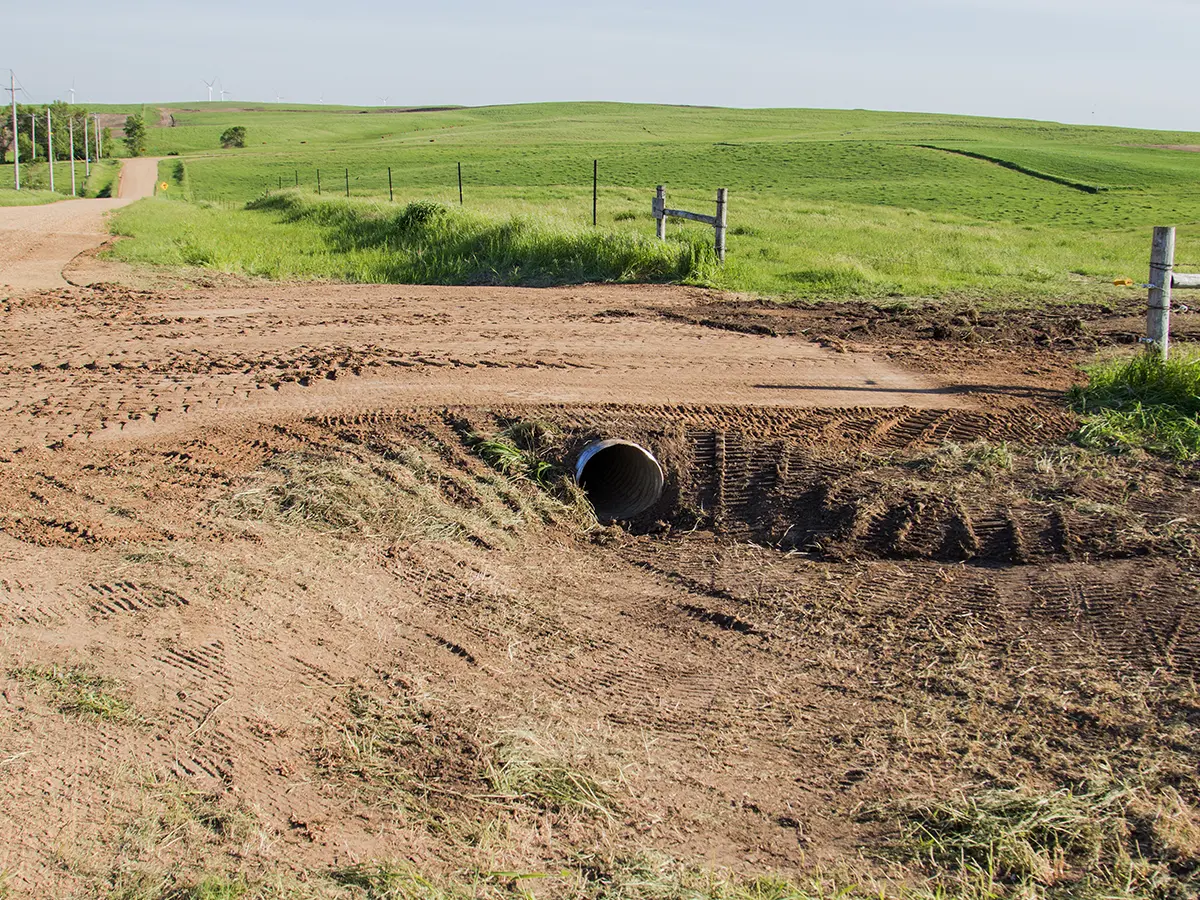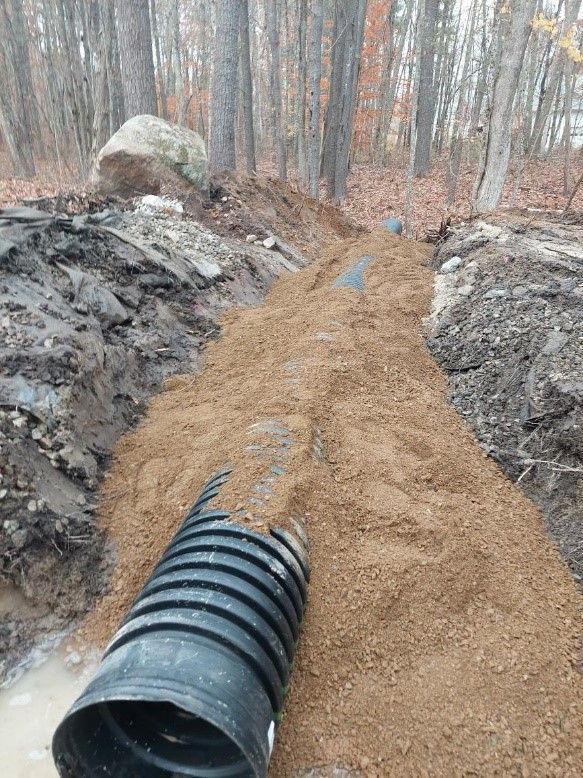Culvert Installment Facilitated: Step-by-Step Guide for Success
From selecting the ideal culvert dimension to integrating proper drain steps, each action in the setup procedure plays a vital function in the capability and longevity of the culvert system. Keep tuned to discover the essential actions and considerations that can make culvert installment a seamless and effective endeavor.
Picking the Right Culvert Size
Selecting the proper culvert size is vital for guaranteeing reliable water flow and architectural stability in culvert installment jobs - Pad Construction. The dimension of the culvert straight affects the flow capability of water through the framework. A culvert that is too little can lead to flooding and overflow, while one that is as well large might cause decreased water speed, potentially triggering sediment accumulation and clogs
To identify the best culvert dimension, variables such as the watershed location, peak flow rates, and hydraulic performance demand to be thoroughly considered. Computations based upon these criteria aid in choosing a size that can effectively take care of the expected water volume while reducing the danger of clogs and structural failure.
It is important to consult design standards and requirements to make sure that the picked culvert dimension fulfills the job needs and local policies (Pad Construction). By choosing the ideal culvert size, task supervisors can enhance water circulation, stop prospective problems, and boost the general efficiency and durability of the culvert installation
Preparing the Installation Website
Efficient culvert installment demands precise prep work of the installation site to make sure ideal structural assistance and functionality. Before commencing the installment process, it is crucial to remove the website of any type of particles, plant life, or blockages that could hamper the culvert's placement.
Moreover, it is necessary to consider aspects such as dirt make-up, groundwater degrees, and environmental effects when preparing the installment website. Conducting a complete website assessment can help recognize any type of prospective difficulties or threats that may affect the culvert's performance. By taking the time to prepare the installation website properly, you can assist ensure an effective culvert setup that satisfies architectural demands and ensures long-term functionality.
Placing the Culvert Correctly

The grade at which the culvert is placed is important for keeping an appropriate slope for water circulation. A progressive slope aids stop read merging and advertises efficient drainage. Furthermore, the culvert needs to be oriented correctly to guarantee that the inlet and electrical outlet are in the correct areas. This orientation is vital for the culvert to operate effectively in taking care of water flow.
Backfilling and Condensing the Dirt
Appropriate backfilling and compaction of the dirt around the culvert is vital to make sure stability and avoid potential concerns in the future. As soon as the culvert is appropriately put, the following vital step is to backfill the area around it with ideal product.
After putting the backfill product, it is necessary to portable it in layers of consistent thickness. Making use of a compactor or a mechanical meddle, small the dirt gently to stay clear of damaging the culvert. Compaction helps in lowering the possibilities of negotiation and makes certain consistent assistance around the culvert. It is crucial to compact the dirt uniformly on all sides of the culvert to maintain its architectural honesty.
Appropriate backfilling and compaction not only give stability to the culvert yet likewise aid in avoiding soil disintegration and maintaining the long life of the culvert system.
Guaranteeing Correct Drainage Assimilation
Integrating effective drainage services plays a vital role in the general capability and long life of culvert installments. Correct drain assimilation is essential for handling water flow, protecting against disintegration, and guaranteeing the architectural honesty of the culvert system. To achieve this, it is important to create a comprehensive water drainage strategy that takes into consideration factors such as the volume of water expected, the topography of the area, and the sort of soil present.

Additionally, incorporating attributes like erosion control procedures, such as riprap or plants, can better boost the efficiency of the drainage system. By carefully intending and implementing these drain options, culvert installations can work YOURURL.com efficiently and hold up against the test of time.
Conclusion
Finally, appropriate culvert setup is vital for keeping effective drainage systems. By picking the best culvert dimension, preparing the setup website, putting the culvert properly, backfilling and compacting the dirt, and guaranteeing correct drain assimilation, success can be attained. Complying with these steps will aid guarantee the long life and effectiveness of the culvert, inevitably adding to the general success of the water drainage system.
Comments on “Comprehensive Culvert Installation for Effective Water Drainage”